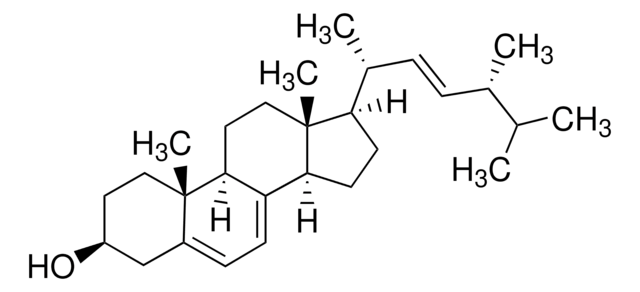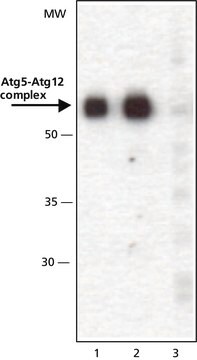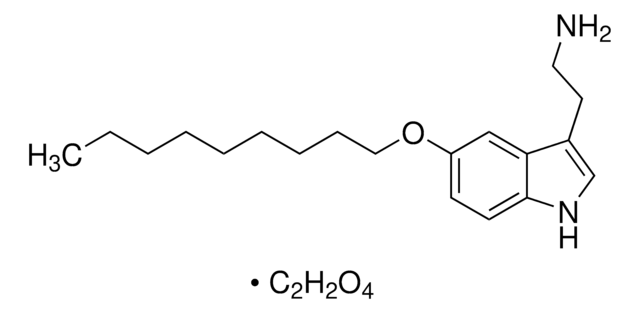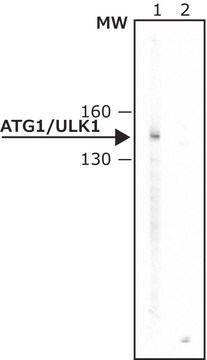Wichtige Dokumente
A0856
Anti-ATG5 (N-terminal) in Kaninchen hergestellte Antikörper
affinity isolated antibody, PBS solution
Synonym(e):
Anti-APG5, Anti-APG5L, Anti-ASP, Anti-ATG5 autophagy related 5 homolog (S. cerevisiae), Anti-Apoptosis-specific protein, Anti-Autophagy protein 5-like
About This Item
Empfohlene Produkte
Biologische Quelle
rabbit
Qualitätsniveau
Konjugat
unconjugated
Antikörperform
affinity isolated antibody
Antikörper-Produkttyp
primary antibodies
Klon
polyclonal
Form
PBS solution
Mol-Gew.
antigen ~56 kDa (Atg5-Atg12 complex)
Speziesreaktivität
mouse, human, rat
Verpackung
antibody small pack of 25 μL
Methode(n)
immunofluorescence: suitable
western blot: 0.5-1 μg/mL using whole extracts of human K562, rat NRK, and mouse 3T3 cells
UniProt-Hinterlegungsnummer
Versandbedingung
dry ice
Lagertemp.
−20°C
Posttranslationale Modifikation Target
unmodified
Angaben zum Gen
human ... ATG5(9474)
mouse ... Atg5(11793)
rat ... Atg5(365601)
Spezifität
Immunogen
Anwendung
- in immunoblotting
- in immunofluorescence
- in western blotting
Western Blotting (1 paper)
Biochem./physiol. Wirkung
Physikalische Form
Haftungsausschluss
Sie haben nicht das passende Produkt gefunden?
Probieren Sie unser Produkt-Auswahlhilfe. aus.
Empfehlung
Ähnliches Produkt
Lagerklassenschlüssel
10 - Combustible liquids
WGK
WGK 3
Flammpunkt (°F)
Not applicable
Flammpunkt (°C)
Not applicable
Persönliche Schutzausrüstung
Eyeshields, Gloves, multi-purpose combination respirator cartridge (US)
Hier finden Sie alle aktuellen Versionen:
Besitzen Sie dieses Produkt bereits?
In der Dokumentenbibliothek finden Sie die Dokumentation zu den Produkten, die Sie kürzlich erworben haben.
Kunden haben sich ebenfalls angesehen
Unser Team von Wissenschaftlern verfügt über Erfahrung in allen Forschungsbereichen einschließlich Life Science, Materialwissenschaften, chemischer Synthese, Chromatographie, Analytik und vielen mehr..
Setzen Sie sich mit dem technischen Dienst in Verbindung.






